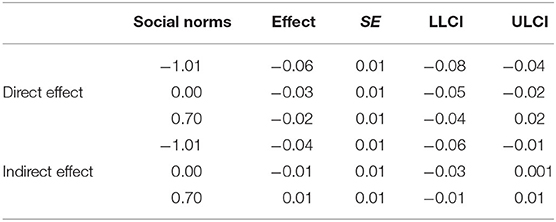

These arguments are not beyond criticism (Block, 1995), but they exemplify the type of rationale needed to justify directionality specifications. (1993) measured other presumed causes of delinquency, such as social class, and controlled for them in the analysis. They cited results of prospective studies which indicated that low verbal ability precedes antisocial behavior. (1993), the study participants were about 12 years old, which may preclude delinquent careers long enough to affect verbal skills. "This hypothesis raises some questions: Why this particular direction of causation? Is it not also plausible that certain behaviors associated with delinquency, such as truancy or neurological compromise due to drug use, could impair verbal skills? What about other causes of delinquency? In Lynam et al. (2012) indicated that economic stress (X) leads to desire to disengage/withdraw (Y) as a result of the depressed affect (M). Process Example (from Andrew Hayes) using continuous variablesĢ62 entrepreneurs responded to online survey. Step 4: X and Y controlling for M should be zero (or reduced)Ĭausal assumptions are valid (Judd & Kenny, 2010) Step 3: M and Y are correlated while controlling for X (both have to caused by – X & Y may be mediated (M), C’ is zero or reduced Hold, mediators speak to how or why such effects occur." p. Whereas moderator variables specify when certain effects will Mediators explain how external physical events take on internal psychological That it accounts for the relation between the predictor and the criterion. General, a given variable may be said to function as a mediator to the extent When you remove the effect of education, the relation between SES Might be a mediator variable in that it explains why there is a relation between Moderator variable, in that the relation between SES and BSE could be strongerįor older women and less strong or nonexistent for younger women. Social class (SES) and frequency of breast self-exams (BSE). As an example, let's consider the relation between Variables, and a mediator variable is one that explains the relationship Variable is one that influences the strength of a relationship between two other

Psychological research: Conceptual, strategic, and statistical considerations. The moderator-mediator variable distinction in social What was initially viewed as an obstacle may result in the discovery of an ATI effect, which may be described statistically through simple mathematical calculations.Kenny, D. This tutorial outlines the process for analyzing data resulting from two-group pre-post studies when data violate the ANCOVA assumption of homogeneity of regression slopes. Using formulae based on the Johnson-Neyman procedure to define simultaneous regions of significance is one straightforward alternative. Consequently, alternative approaches to ANCOVA must be sought. When heterogeneity of regression slopes is found, ATI effects are revealed. When applying analysis of covariance (ANCOVA), it is important to check for ANCOVA assumptions, including an assumption known as homogeneity of regression slopes. Researchers may mistakenly overlook these effects, however, due to inappropriate analytical approaches. Violation of the homogeneity of regression slopes assumption in ANCOVA for two-group pre-post designs: Tutorial on a modified Johnson-Neyman procedureīibTEX format RIS format XML format APA styleĪptitude-treatment interaction effects two-group pre-post designs ANCOVA Johnson-Neyman procedureĪptitude-treatment interaction (ATI) effects are present when individuals demonstrate differential outcomes across treatments based upon aptitude\IeC in which pre-intervention scores may be considered to reflect individual aptitude.


 0 kommentar(er)
0 kommentar(er)
